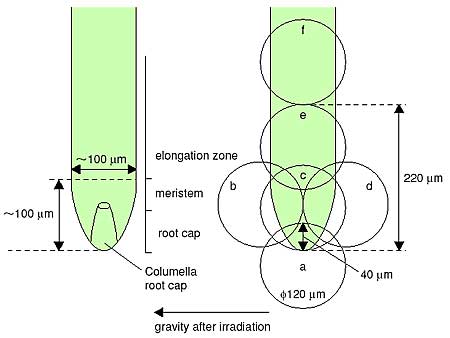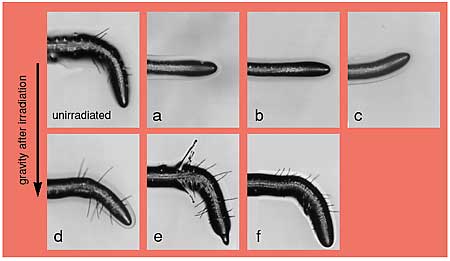Root gravitropism, although simple to define, is a wondrously complex phenomenon in plants. A large body of research using a model plant, Arabidopsis thaliana, has revealed that the root tip (columella, Fig. 9-13 (left)) is the primary mechanism for gravity sensing and that cell elongation at the elongation zone will cause the root to bend downwards. However, the mechanism whereby gravity sensing and signaling leads to the actual physical change of cell elongation is still unclear. We first investigated the positional effects of cell inactivation on root gravitropism, using a heavy-ion microbeam that was developed in the Takasaki Radiation Chemistry Research Establishment, JAERI.
Roots incubated vertically were irradiated with 220 MeV C ion beams with diameters of 120 micrometer (Fig. 9-13 (right)) and then gravistimulated by incubation with 90°rotation. After 3 days, incubation showed that different effects on root gravity appeared corresponding to the irradiation sites.
Fig. 9-14 shows typical results for the effects of microbeam irradiation. Irradiation at position a, which is the gravity-sensing site, strongly inhibited root elongation and curvature compared with the non-irradiated control. Interestingly, irradiation at position d, which becomes the upper part of the root after gravistimulation, preferentially showed the gravitropism, whereas irradiation at position b, which became the lower part after gravistimulation, strongly inhibited the gravitropism.
Based on the present results, it is likely that gravity signaling after gravity sensing is transported from the root tip to the elongation zone through the lower portion, leading to root bending at the elongation zone. |


